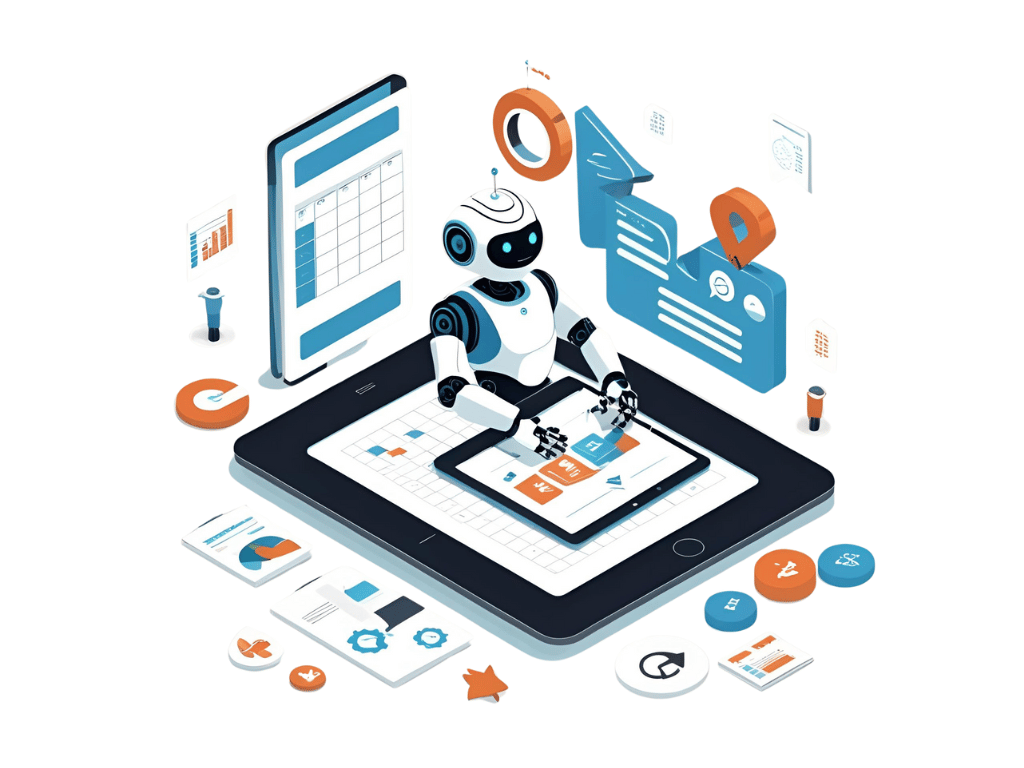- 11 min read

Your sales team is drowning in lead data—but somehow they’re still missing follow-ups. Marketing wants more insights, but legal won’t approve the analytics tools. Your devs need test data, but everything is locked behind privacy gates that require a blood oath to access.
Sound familiar?
This is the day-to-day chaos of trying to run a data-hungry business with one hand tied behind your back. Privacy laws are real. Compliance headaches are realer. But progress doesn't have to be this hard.
That’s where synthetic data comes in. And no—it’s not some creepy Black Mirror sci-fi thing. It’s just… fake data, made by machines, that'll let you move faster without breaking stuff.
In this guide, I’m walking you through what synthetic data actually is, what it can do for teams like yours, and why it’s quickly becoming the go-to play for anyone tired of waiting on ‘real’ data to get things done.
Let’s keep it simple: synthetic data is artificially generated data that behaves like real-world data—but doesn’t include any actual personal info.
It’s created using algorithms, simulations, or generative AI tools. And while it looks and acts like real data (statistically speaking), it never touches anyone’s private details—which means no privacy issues, no compliance nightmares, and no “you’re not authorized to use that” Slack messages from legal.
It’s like tofu for your AI: not the real thing, but structured just right to get the job done. And way less liability if someone finds it in your fridge.
Use it to train software. Test new features. Model scenarios. Analyze without risking real customer data.
Point is: it’s fake data that solves real problems.
Because the old way of working with data is slow, messy, expensive—or all three.
Real data is sensitive. Sharing it across teams? Dangerous. Labeling it for AI training? Time-consuming and error-prone. Finding edge cases within it? Like hunting ghosts in a haystack.
Synthetic data changes that. It gives you instant, safe, scalable test data—without waiting for some privacy officer to greenlight a request two weeks late. And thanks to advances in generative AI, it’s better and easier to generate than ever before.
For small businesses trying to act like big ones—or big teams stuck with startup tools—this is a game-changer.
Synthetic data doesn’t contain real PII (personally identifiable info), so it skips all the drama around GDPR, HIPAA, CCPA, etc.
You can pass it between teams, tools, vendors—no NDAs required. For industries like healthcare or finance, this is huge. For marketing teams sick of being handcuffed by compliance? Also huge.
Collecting real-world data takes time and costs money. LOTS of both. Crash test data costs millions. Customer data takes months of cleanup. And then you STILL can’t use it without oversight.
With synthetic data, you generate what you need, when you need it. One study found teams cut data prep time from months to hours. That’s not a typo.
This is where it gets spicy. You’re not just copying old data—you’re designing new data with the exact characteristics you want.
Need 500 “edge case” customer journeys to refine your churn model? Done. Want neutral, unbiased buying data to test a new email segmentation strategy? Cool. You’ve got control over volume, class distribution, event frequency—the whole menu.
AI needs labeled data. But labeling sucks. It’s slow, expensive, and people mess it up.
Synthetic data? Comes pre-labeled. Perfectly. No interns required.
If you feed your AI biased data, guess what kind of results you’ll get? (Spoiler: Not inclusive. Not accurate.)
Synthetic datasets can be engineered to balance out the issues and reduce bias at the source. That means fairer results, better models, and fewer “we didn’t mean it that way” PR fiascos.
You can only collect so much real data. But synthetic data? It scales like software. Need 10,000 new examples? Cool. Hit “generate.”
This is especially helpful when your real datasets are small, skewed, or just flat-out missing.
Fun fact: Pharma companies use synthetic patient data to train diagnostics without violating HIPAA regulations—and it’s bordering on magic for clinical research efficiency.
Yep, there are caveats. As much as I want synthetic data to be a silver bullet, it’s more like a scalpel. Here’s what to look out for:
Bottom line: Synthetic data doesn’t replace real data. It amplifies it.
If you’re looking to digitize faster, experiment more, and stop drowning in data debt, this isn’t optional anymore—it’s foundational.
You don’t need to go build a data engine from scratch or download every off-the-shelf data generator from GitHub.
At Timebender, we design custom and semi-custom automation systems that include smart data generation components—so you can scale content, outreach, and analytics without paying the real-data tax (in time or security risk).
We’re not just a “tool.” We’re a workflow shop. And we do this for SaaS agencies, legal firms, MSPs, and any team that relies on solid ops to grow smart—not loud.
Book a free Workflow Optimization Session and let’s figure out if synthetic data or smart AI layering could actually save your team 10+ hours a week.
No hard pitch. Just real talk about what’s slowing you down—and what could fix it.
River Braun, founder of Timebender, is an AI consultant and systems strategist with over a decade of experience helping service-based businesses streamline operations, automate marketing, and scale sustainably. With a background in business law and digital marketing, River blends strategic insight with practical tools—empowering small teams and solopreneurs to reclaim their time and grow without burnout.
Schedule a Timebender Workflow Audit today and get a custom roadmap to run leaner, grow faster, and finally get your weekends back.
book your Workflow optimization session